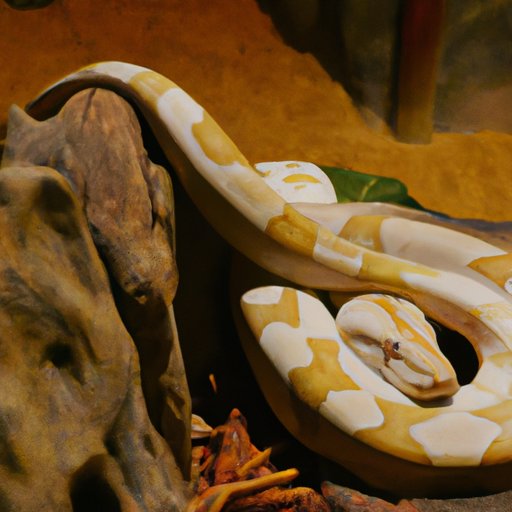Introduction
Snakes are some of the most feared animals on the planet, and with good reason. There are over 3,000 species of snakes around the world, and many of them are equipped with deadly venom. But what is the most poisonous snake in the world? And how do other species compare when it comes to lethality? In this article, we’ll explore the answers to these questions and more.
It’s important to understand the dangers posed by different snake species, as some are more venomous than others. Knowing which snakes are the most toxic can help people take precautions to avoid being bitten, as well as provide guidance on what to do if someone has been bitten by a venomous snake.

A Comparison of the Most Poisonous Snakes in the World
Venomous snakes differ in terms of their lethality. The amount of venom produced by a snake, as well as its toxicity, will vary depending on the species. There are two main types of venom: neurotoxic and hemotoxic. Neurotoxic venom acts on the nervous system, while hemotoxic venom affects the circulatory system. Some species are capable of producing both types of venom.
When looking at the most venomous snakes in the world, the top 10 include the inland taipan, the black mamba, the eastern brown snake, the coastal taipan, the tiger snake, the saw-scaled viper, the king cobra, the common krait, the yellow bellied sea snake, and the common death adder.

Examining the Lethality of Different Snake Venoms
There are several factors that influence the amount of venom a snake produces. Generally speaking, larger snakes tend to produce more venom than smaller ones, and adult snakes have more venom than juvenile snakes. Additionally, the health and age of a snake will affect its venom potency; older snakes may produce less venom, while sick or injured snakes may produce more.
Measuring the toxicity of snake venom is done using a number of methods. Venom yield testing measures the amount of venom a snake produces, while LD50 testing measures the amount of venom needed to kill 50% of test animals. Both of these tests are used to assess the potency of a snake’s venom.

Investigating the Most Venomous Snake Species
The world’s most dangerous species of snake is the inland taipan. This snake is native to Australia and is considered to be the most venomous land snake in the world. It prefers dry, open habitats such as grasslands and woodlands, and is typically found in arid regions of the country. When threatened, this species will often coil up and strike repeatedly, injecting large amounts of venom into its target.
A Guide to the Most Dangerous Snakes on Earth
When encountering a venomous snake, it’s important to take certain precautions. Avoiding the snake is the best option; slowly back away from the area and leave it alone. If you must handle the snake, use appropriate safety gear such as gloves and long pants. Never attempt to catch or kill a venomous snake, as this can increase the risk of being bitten.
If someone has been bitten by a venomous snake, there are certain first aid measures that should be taken. The person should remain calm and still, as movement can cause the venom to spread more quickly. The wound should be washed with soap and water, and a pressure immobilization bandage should be applied to the affected area. Medical attention should be sought immediately.
The World’s Most Deadly Snakes: An Overview
The world’s deadliest snakes can be found in a variety of habitats, from deserts to rainforests. They range in size from small to large, and can be identified by their unique colors and patterns. Common characteristics of these snakes include vertical pupils, triangular heads, and a lack of eyelids. If one of these snakes is encountered in the wild, it’s important to keep your distance and not attempt to capture or kill it.
Those who live in areas inhabited by venomous snakes should take certain precautions. Keeping lawns and gardens free of debris and tall grass can help reduce the chances of a snake entering the property. It’s also important to wear protective clothing when walking through areas where snakes may be present.
Conclusion
In conclusion, understanding the dangers posed by different snake species is essential, as some are more venomous than others. The most poisonous snake in the world is the inland taipan, which is native to Australia. Other venomous snakes include the black mamba, the eastern brown snake, the coastal taipan, the tiger snake, the saw-scaled viper, the king cobra, the common krait, the yellow bellied sea snake, and the common death adder. Taking proper precautions and knowing how to respond if someone has been bitten by a venomous snake can help reduce the risk of serious injury or death.


